Customer Lifecycle Marketing: How to Attract and Retain More Customers
 When you’re purchasing a new product, you’ll go through five main stages.
Successful companies deliver the right content at the right stage—which likely has an impact on if (and when) you seal the deal.
Fancy learning how you can do that for your customers?
It starts with a customer lifecycle marketing strategy.
When you’re purchasing a new product, you’ll go through five main stages.
Successful companies deliver the right content at the right stage—which likely has an impact on if (and when) you seal the deal.
Fancy learning how you can do that for your customers?
It starts with a customer lifecycle marketing strategy.
Customer Lifecycle Marketing: How to Attract and Retain More Customers by @elisedopson via @CoSchedule
Click To TweetWhat is Customer Lifecycle Marketing?
Before we dive in, let’s cover the basics and touch on what customer lifecycle marketing actually means. Every customer goes through these five key stages before they buy something:- Awareness
- Consideration
- Purchase
- Support
- Retention
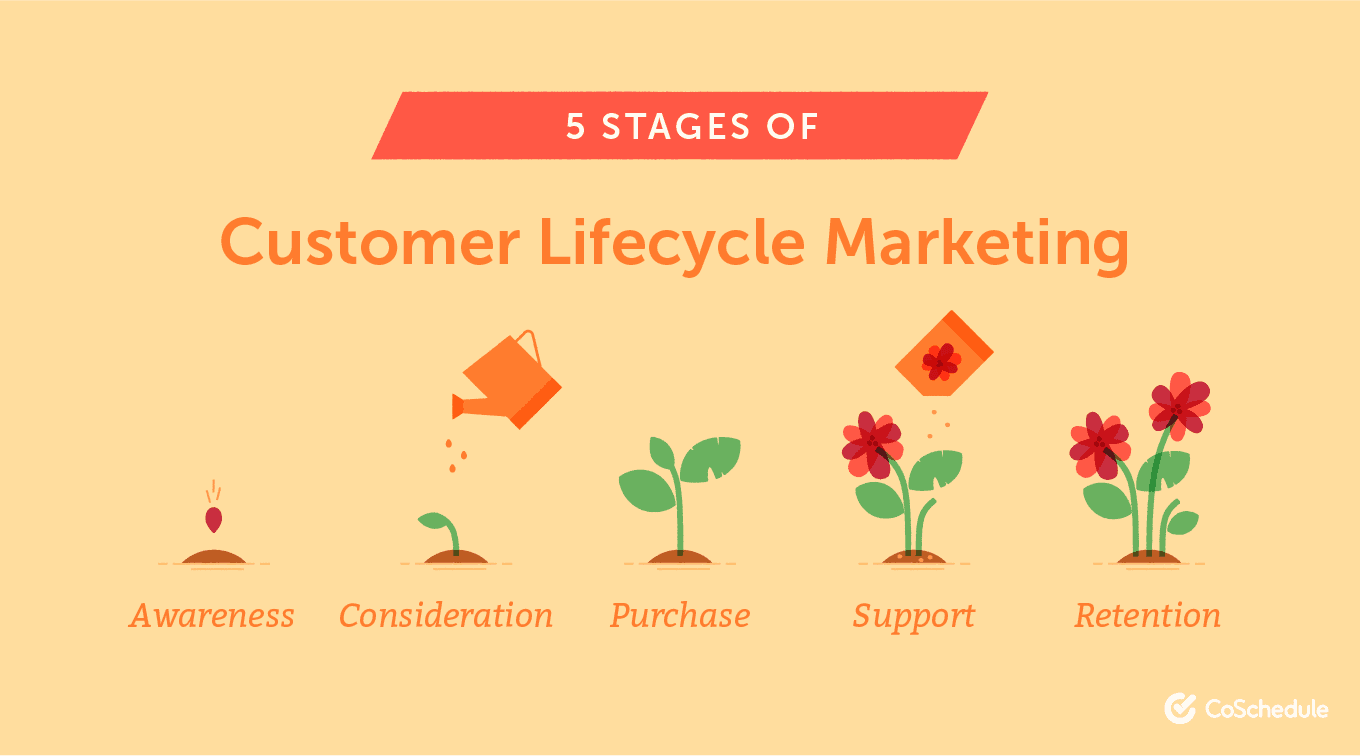 The duration depends on various things—such as the product, service, industry, or price—but all five stages are present in any sales journey. It’s the same cycle no matter whether they’re buying a diary or a $5,000 SaaS product.
The duration depends on various things—such as the product, service, industry, or price—but all five stages are present in any sales journey. It’s the same cycle no matter whether they’re buying a diary or a $5,000 SaaS product.
Customer lifecycle marketing is the content strategy you use to meet and communicate with potential customers at each touchpoint.(Hence why you might also see this called a “sales funnel” or “buyer’s journey.”)
Download Your Customer Lifecycle Marketing Strategy + Marketing Calendar Templates
Organizing and executing your strategy will require two tools: a documented plan and a marketing calendar to visualize each piece of content you'll publish to address each stage of the customer lifecycle. Download these two templates now, then read on to learn what customers need from your content at every stage in the purchasing cycle.Why Bother With Understanding the Customer Lifecycle?
Now we know what customer lifecycle marketing is, it’s time to move onto the juicy part: why you should be thinking of this in your business. After all, it’s easy (and sometimes, standard practice) to find a keyword with lots of monthly searches, write it up, and hope for the best. The only problem? You optimize it for SEO and start to drive traffic from organic search… But those visits don’t translate into conversions—be that signing up to an email list or completing a purchase. That’s because if you don’t pinpoint exactly who should be reading it, the person landing there won’t complete the goal of that piece of content. You need to give the right person the right thing, at the right time. (An obvious example is a sales page. Shoving a sales page in front of a stranger likely won’t make them want to buy because they don’t know you, or your product/service, yet. Why would they trust you enough with their cash? They don’t know whether you’ll deliver.) A customer lifecycle marketing strategy takes this into consideration. We can see this on a very basic level with the two main categories: new customers and existing customers.Attract New Customers
You won’t have a profitable or sustainable business if you don’t attract customers. This is why most marketing campaigns target people known to be at the top of the funnel, or starting point of the customer lifecycle. The intention is to show new people what you have to offer, and nurture them towards a sale. So, the first few stages of a customer lifecycle marketing strategy are geared towards brand awareness. You want to attract a bunch of people with a vague interest in your industry, then convince them to engage with your campaigns. This engagement builds trust—something crucial for any purchasing decision. Source: Harvard Business Review
Source: Harvard Business Review
Retain Existing Customers
You’ve attracted customers and they trust you enough to purchase. How do you continue to get value from them without relying on them to purchase on their own accord? The answer: With marketing campaigns specifically crafted for those people. This can be beneficial in more ways than one. Sure, you’ll get a bunch of sales trickling in—but it’s also 5-25 times more expensive to acquire a new customer than it is to retain an existing one. So much so, that improving your customer retention rates by 5% can increase your profitability by up to 95%.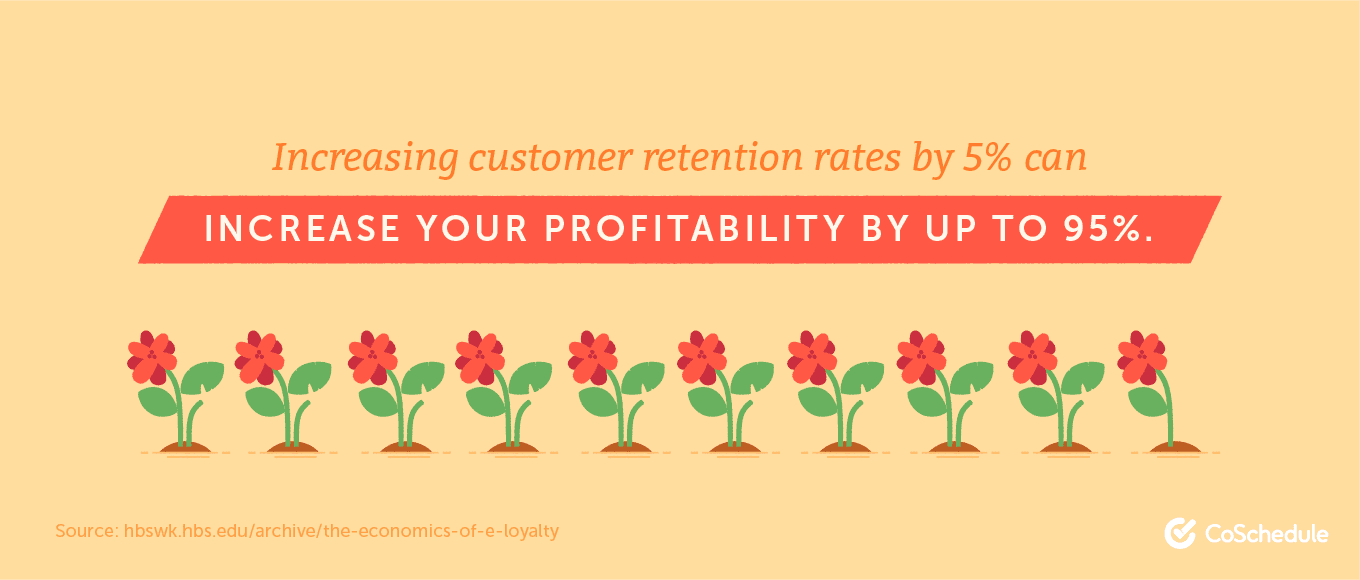 Source: Harvard Business School
Source: Harvard Business School
How to Create a Customer Lifecycle Marketing Strategy
Are you ready to create a customer lifecycle marketing strategy that ticks all five boxes from stranger to raving customer? Here’s what you’ll need to do at each stage of the funnel: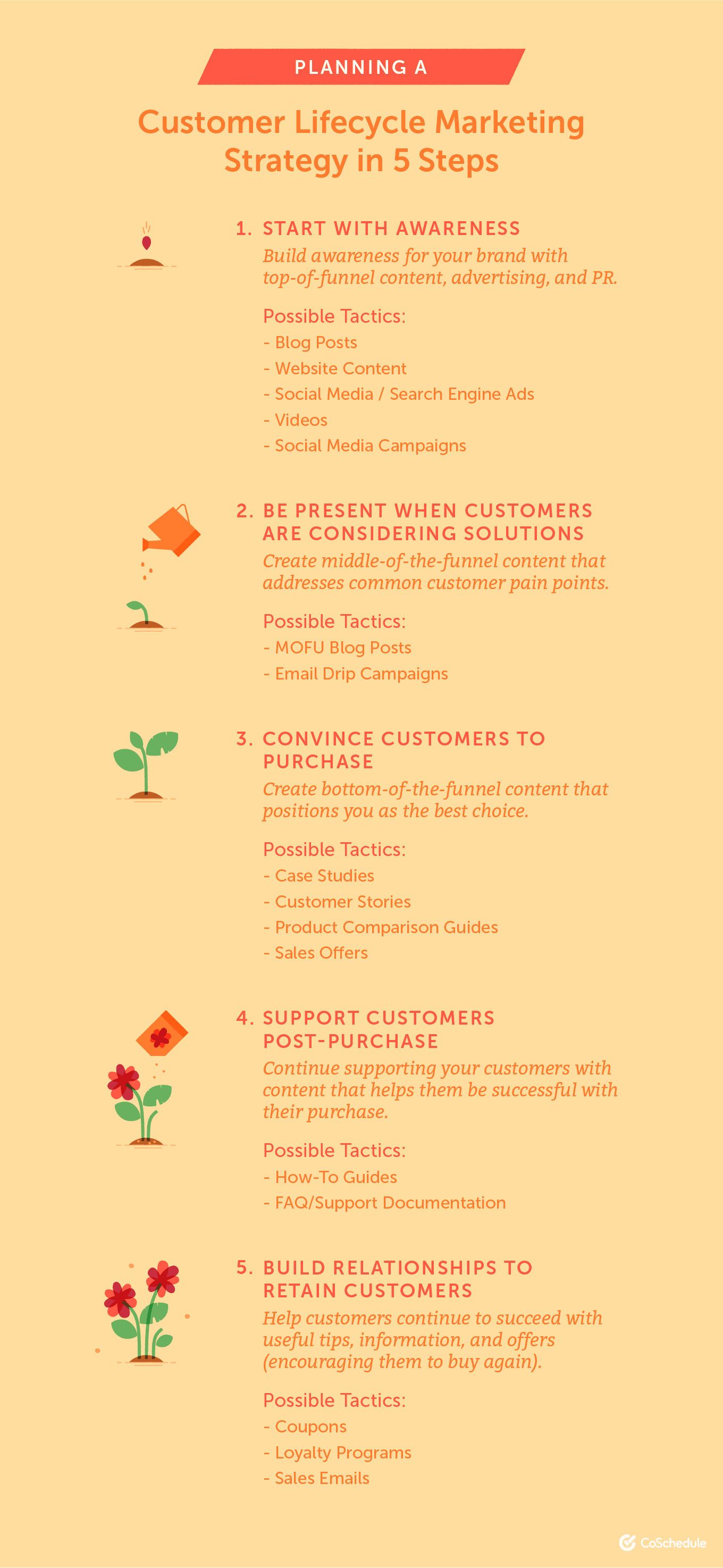
1. Awareness
The first stage of any customer journey starts before the person knows your brand. The people you’ll target at this stage don’t know you, your product, or your services. They’re complete strangers—hence why your goal is to get in front of them. (You shouldn’t aim to get in front of everybody, though. Refer back to your buyer personas and target people who fit that mould, but likely don’t know you exist yet.) Because these people are strangers, they don’t have much time to invest into your content. They want something light-hearted about a topic they’re already interested in. Think about it: You wouldn’t download and read a 50-page eBook from a brand you’ve never heard of, right? People in this stage have the same opinion. You need to win them over with a short burst of content that doesn’t need too much commitment on their side. The channel you’re using to communicate with them is crucial. Because they don’t have much time to give you, ideal channels might be:- Blog posts
- Website content
- Landing pages
- Social media content
- Videos
- Podcasts
The goal is to expose your brand name to them, give them free value, and begin building trust.
Click To Tweet2. Consideration
Once somebody knows your brand name, they’ll remember you when they’ve got a problem. (You can find yours inside your buyer persona. Have a look at the pain points you’ve listed—these are the things your target customer struggles with, and uses your product/service to solve.) People in the Consideration stage of a customer lifecycle already know they’re struggling with a problem. They’re turning to sites like Google for help to solve it—or, they’ll head to a brand they know through content they saw in the Awareness stage. Content for these people is more in-depth and specific, usually answering a problem they have. It has more search intent than others. For example: someone searching “how to buy Apple stock” is further along in the sales funnel than someone searching “beginner’s guide to investing.” Their search is more specific and they know exactly what they need help with. Again, you might package this content in a different way to Awareness-based content because people have more time and attention to devote. (Remember: They want to solve a problem.) You could do this through:- Blog posts
- Website content
- Email journeys
- Lead magnets or content upgrades
3. Purchase
The person who’s just read your Consideration-focused content knows they want to solve the problem you’ve just discussed with them. However, they’ve got a few more questions before they cross the purchase line. They’re looking for the best company, product, or service to solve their problem, and need some more guidance to help them make their decision. So, think about what people would want to see if they’re debating whether to purchase your product or a competitor. Do they want to see:- Price comparisons?
- Feature comparisons?
- Testimonials of customers similar to them who are happy after purchasing from you?
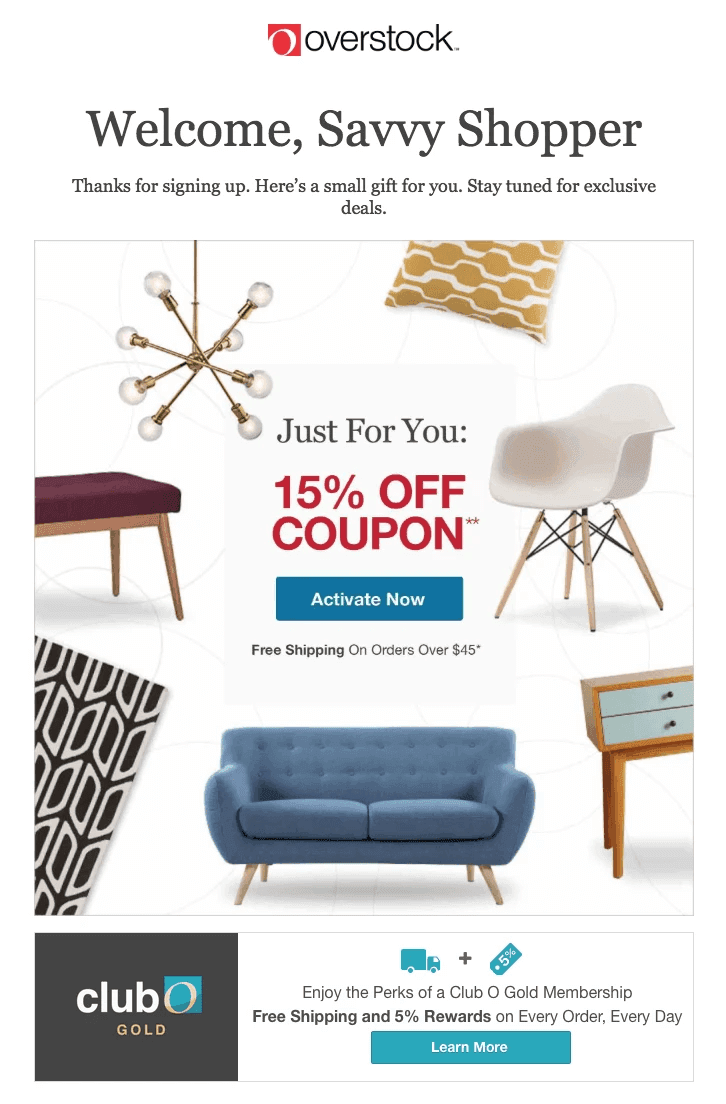 The goal of Purchase content is to encourage that person to buy from you. This email shows it doesn’t always need to be a comprehensive blog post, or a 20-minute-long video.
It can be as simple as an incentive for them to do so—like a discount code.
The goal of Purchase content is to encourage that person to buy from you. This email shows it doesn’t always need to be a comprehensive blog post, or a 20-minute-long video.
It can be as simple as an incentive for them to do so—like a discount code.
4. Support
You’ve convinced your reader to hit the purchase button as a result of your top- and middle-of-funnel content. Great job! But your work isn’t complete just yet. Chances are, the people who’ve just hit purchase and might have some questions. They might be wondering:- How to use a feature inside your app
- How to contact customer support
- How to change their billing details
- An onboarding sequence: This series of messages can slowly drip common support queries to your new customer either via email or in-app messages. The downside? They might be struggling with the issue before your relevant tutorial is delivered.
- A support/help center: Create a huge library of FAQs, and direct people there in their purchase confirmation emails. Zendesk is a great example of this. Their help center is the go-to place for any post-purchase questions:
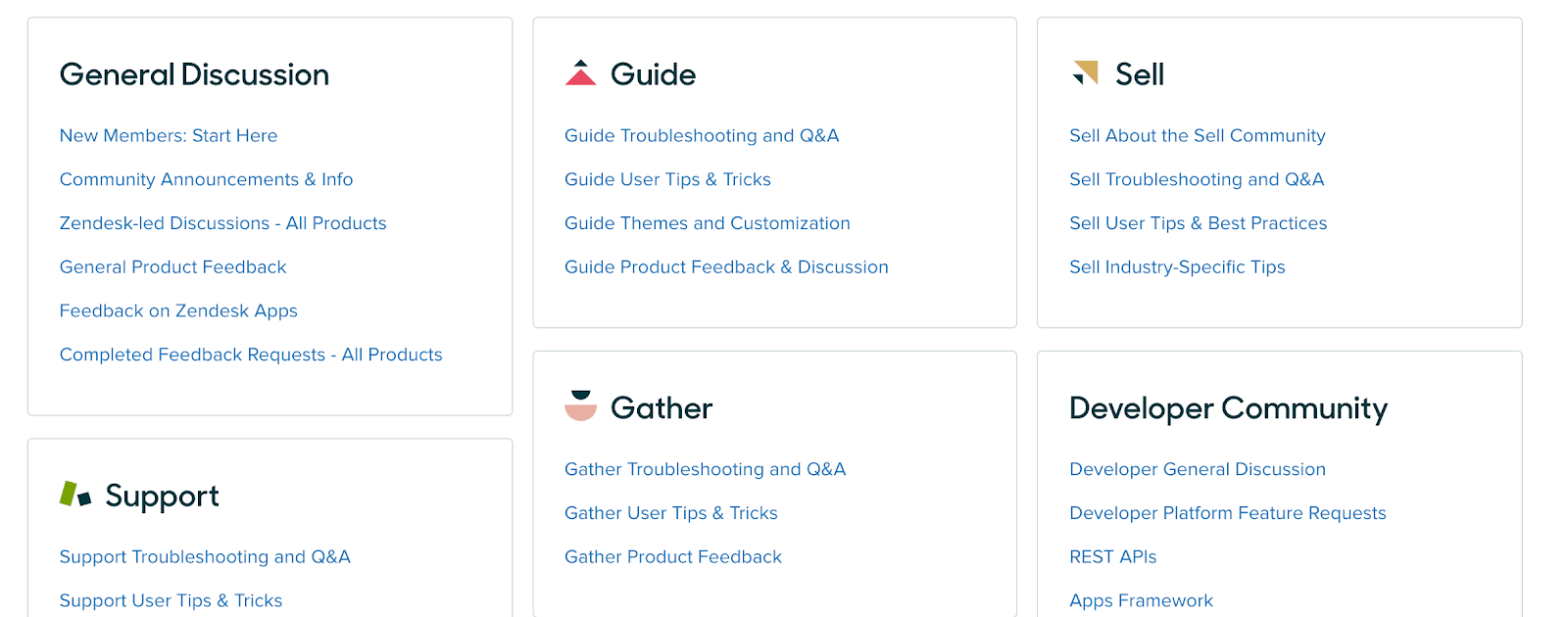 The best part? Both of these distribution tactics help your customer find answers by themselves. They don’t need to wait the 7+ hours it usually takes to receive a response from a customer support agent; the answers are ready and waiting for them.
The best part? Both of these distribution tactics help your customer find answers by themselves. They don’t need to wait the 7+ hours it usually takes to receive a response from a customer support agent; the answers are ready and waiting for them.
5. Retention
What happens if you’ve carried a customer through to the support phase, and they don’t seemingly need help anymore? The answer isn’t “leave them to do their own thing.” Your goal is to either make them continue with their subscription, or buy more products. So, let’s start by thinking about what customers would like to see—even if they’re happy with the item they’ve purchased. You could:- Give them a tutorial that shows how to make the most of their subscription—like how to use certain features
- Offer discount codes to be redeemed off future purchases to thank them for already being a customer
- Share upcoming plans for your company which can’t be seen by non-customers
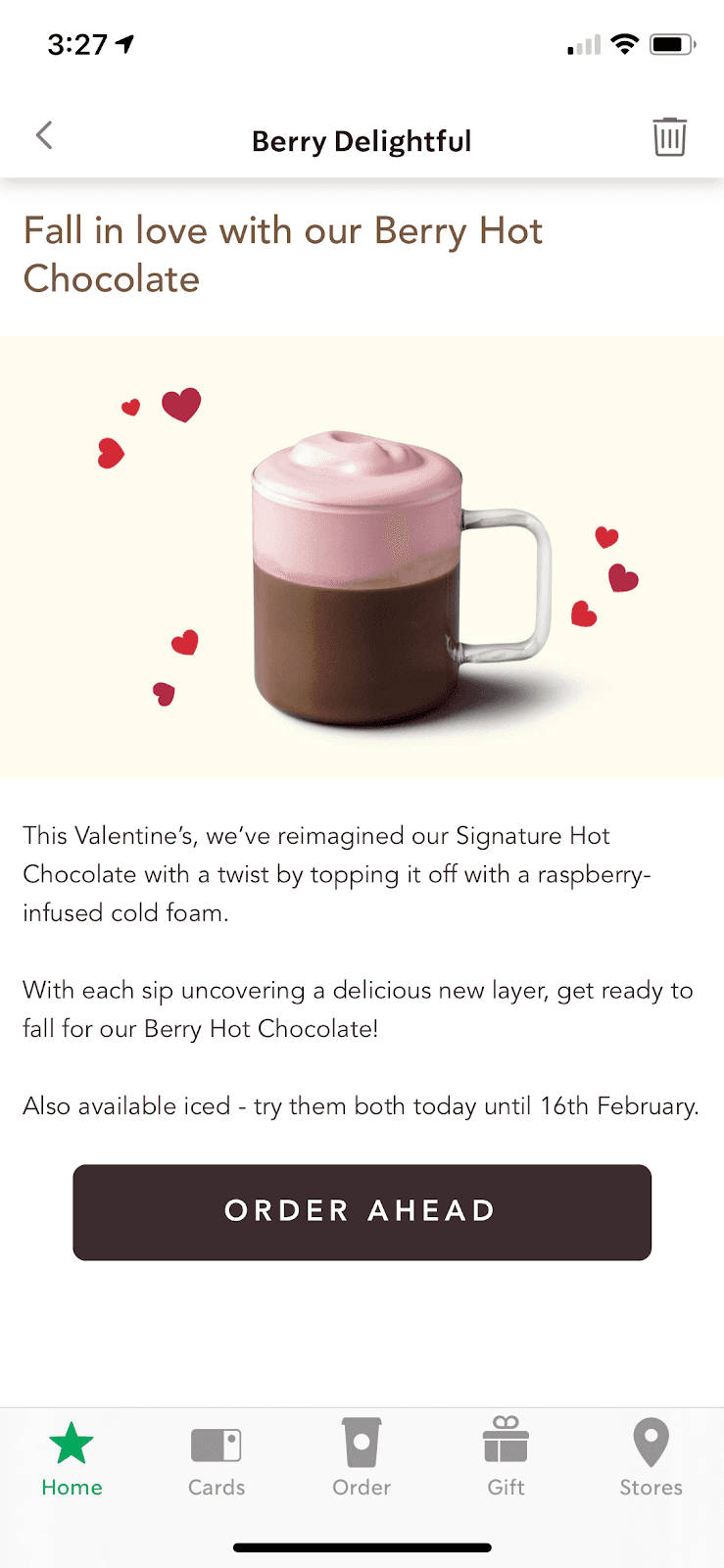 They know I’m a happy customer with no history of complaints. But rather than assuming I’ll repurchase off my own back, they always try and re-engage me with their app—with the goal of going back to their store.
This impacts your bottom line; the ROI you’re getting from content marketing.
Why? Because 36.5% of shoppers said they will spend more on products if they’re loyal to a brand. Sending regular, relevant and engaging content to those people is bound to build that loyalty.
They know I’m a happy customer with no history of complaints. But rather than assuming I’ll repurchase off my own back, they always try and re-engage me with their app—with the goal of going back to their store.
This impacts your bottom line; the ROI you’re getting from content marketing.
Why? Because 36.5% of shoppers said they will spend more on products if they’re loyal to a brand. Sending regular, relevant and engaging content to those people is bound to build that loyalty.
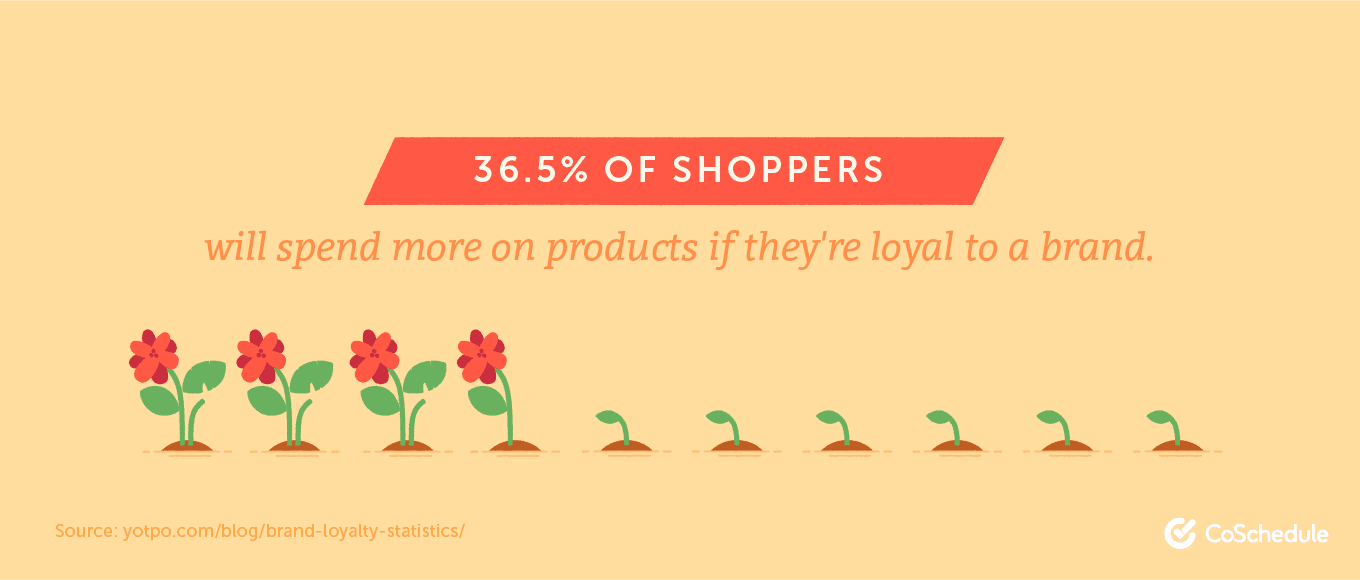 Source: Yotpo
Source: Yotpo


